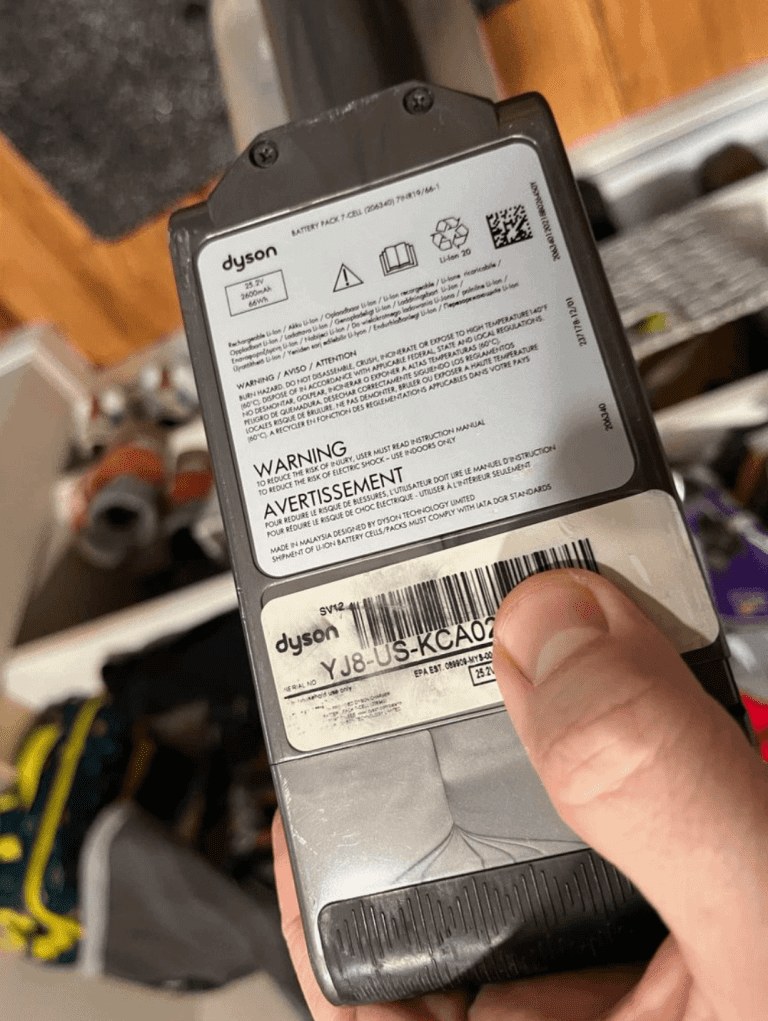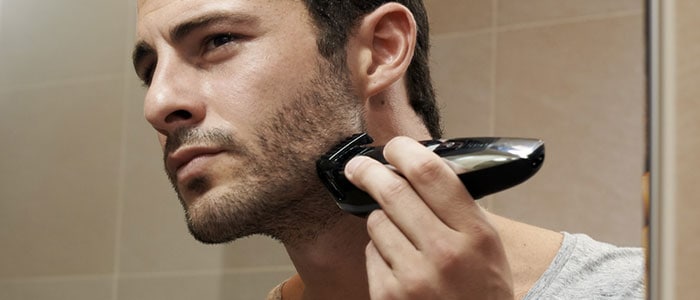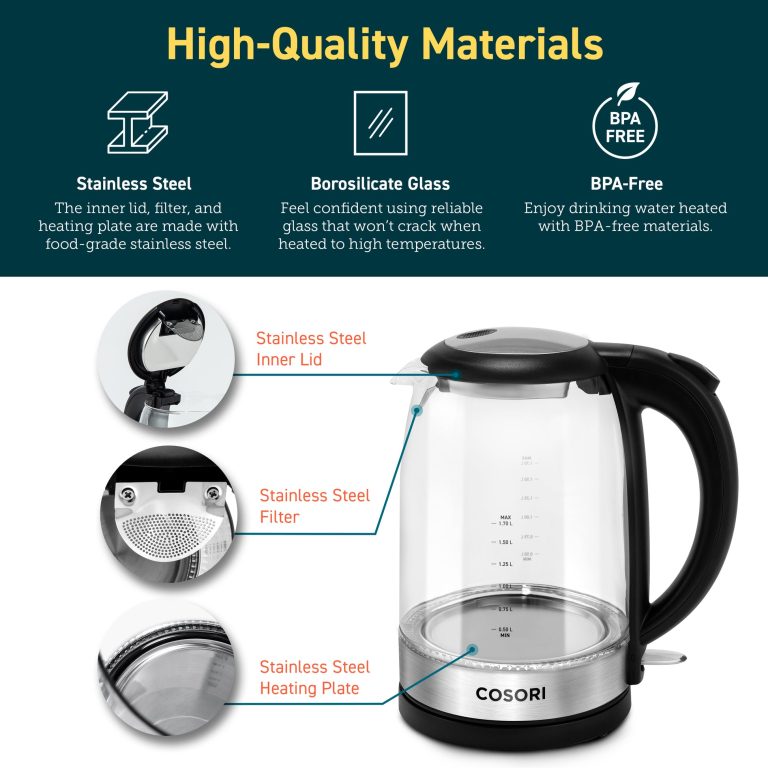How to Cut Hair With Beard Trimmer?
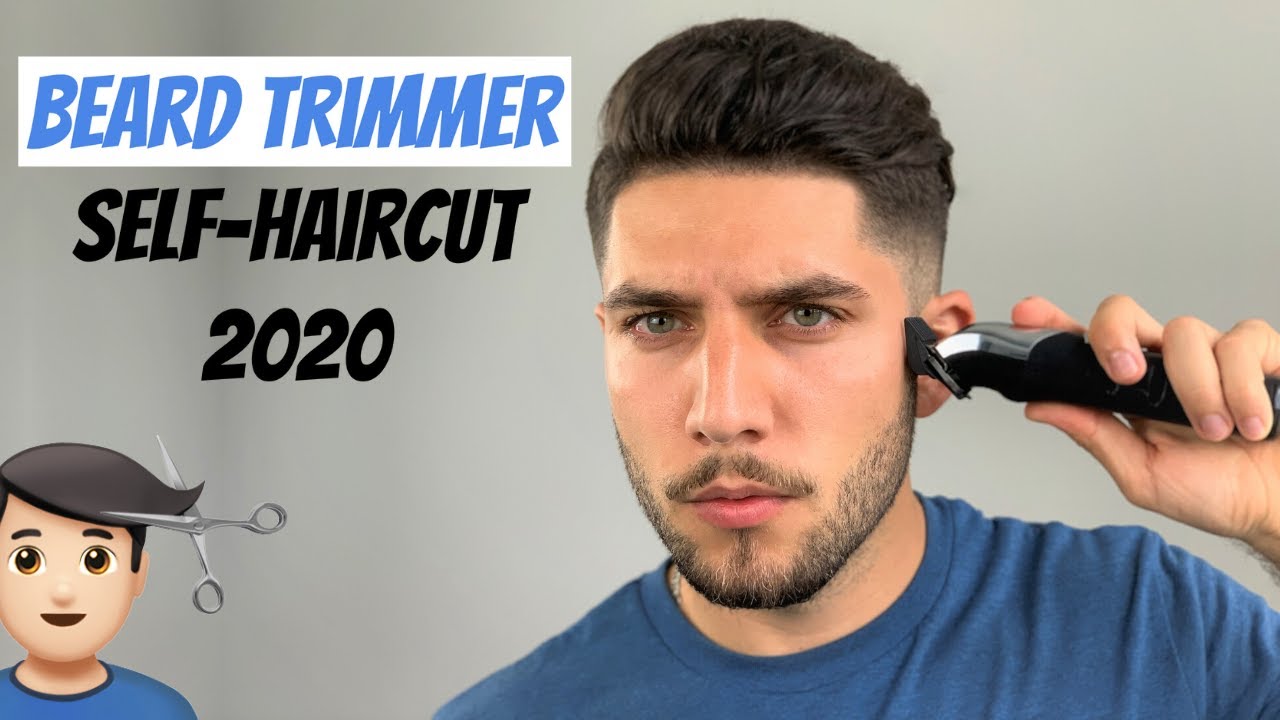
To cut hair with a beard trimmer, start by selecting the desired length setting and comb attachment. Then, carefully trim the hair in the desired direction, using short strokes and ensuring evenness throughout.
Introducing a new hairstyle can be exciting, but scheduling a visit to the barber may not always be possible. In such situations, a beard trimmer can come to your rescue. With its versatile features and easy-to-use settings, a beard trimmer can help you achieve a neat and well-groomed haircut at home.
Whether you want to maintain a short buzz cut or trim your hair to a specific length, a beard trimmer can be a handy tool. In this guide, we will walk you through the steps to cut hair with a beard trimmer, ensuring you achieve a professional-looking result every time.
Why Use A Beard Trimmer For Haircuts
When it comes to cutting hair, many people reach for a pair of scissors or clippers. But have you ever considered using a beard trimmer instead? Beard trimmers are not just for maintaining facial hair; they can also be a versatile tool for cutting hair. In this post, we’ll explore why using a beard trimmer for haircuts is a great choice.
Versatility of Beard Trimmers
One of the main reasons to use a beard trimmer for haircuts is its versatility. Beard trimmers are specially designed to trim hair to a specific length, making them ideal for creating different hairstyles. Whether you prefer a close crop, a textured look, or even a fade, a beard trimmer can achieve it all. With various adjustable settings and attachments, you can easily customize the length and style of your haircuts.
Beard trimmers are not limited to just cutting hair on the head. They can also be used for trimming facial hair, such as sideburns, mustaches, and beards. This means that investing in a high-quality beard trimmer can save you money on buying separate tools for different grooming needs.
Convenience and Cost Savings
Using a beard trimmer for haircuts also offers convenience and cost savings. Unlike clippers or scissors, which can be bulky and require multiple attachments, a beard trimmer is compact and often comes with adjustable combs or guards. This makes it easy to maneuver and achieve the desired haircut without the hassle of changing blades or attachments.
Beard trimmers are portable and lightweight, making them perfect for travel or on-the-go touch-ups. You can easily pack a beard trimmer in your bag without taking up much space. This convenience factor makes them a popular choice among hairstylists, barbers, and individuals who prefer DIY haircuts.
Another advantage of using a beard trimmer is the cost savings. Professional hair clippers can be expensive, especially if you opt for a high-end brand. On the other hand, beard trimmers are generally more affordable while still delivering excellent results. Investing in a good quality beard trimmer can save you money in the long run, as you won’t need to visit the salon or barber as frequently for regular hair maintenance.
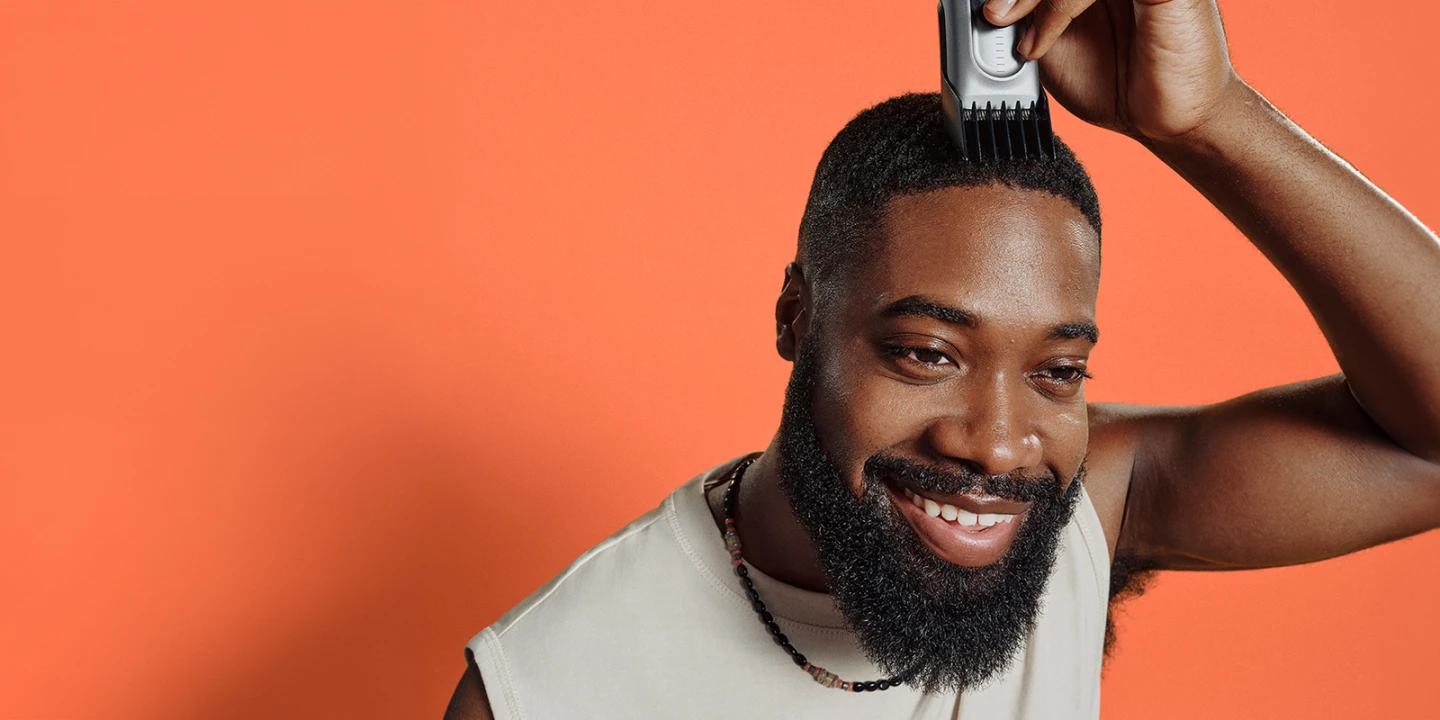
Credit: uk.braun.com
Understanding Different Hair Types
Hair type plays a crucial role when it comes to cutting hair with a beard trimmer. Each hair type has its own unique characteristics, requiring specific techniques and approaches for a successful haircut. By understanding the different hair types, you can ensure that your haircut turns out perfectly tailored to your individual style. In this article, we will delve into the various hair types – straight hair, wavy hair, curly hair, and fine hair – and discuss the best practices for cutting each type using a beard trimmer.
Straight Hair
Straight hair is characterized by its smooth and sleek appearance. It tends to be the easiest hair type to work with when using a beard trimmer for cutting. However, it is important to note that straight hair can sometimes appear thinner, so you might want to consider using a higher guard length to add some volume to your haircut. This will prevent your hair from looking flat and lifeless. Additionally, using a beard trimmer with sharp blades is essential for achieving clean and precise cuts with straight hair.
Wavy Hair
Wavy hair is known for its natural, tousled texture. It falls somewhere between straight and curly hair, making it slightly more challenging to cut with a beard trimmer. When cutting wavy hair, it is crucial to work with the natural flow of the waves. This means following the direction in which the hair naturally falls and using longer guard lengths to avoid cutting too much off. A beard trimmer with adjustable guard lengths will come in handy when working with wavy hair, allowing you to customize the cut based on your desired style.
Curly Hair
Curly hair is characterized by its voluminous and springy nature. It requires a gentle touch and careful technique when cutting with a beard trimmer. Unlike straight or wavy hair, curly hair tends to shrink in length when dry, so it is important to take this into consideration and err on the side of caution when trimming. To achieve the best results, it is recommended to cut curly hair when it is dry and styled as usual. This way, you can accurately gauge the length and shape of the curls and ensure a uniform cut.
Fine Hair
Fine hair refers to hair that is thin and delicate in texture. It can be prone to breakage and damage if not handled properly when cutting with a beard trimmer. When working with fine hair, it is important to use a lighter touch and avoid applying too much pressure with the trimmer. Opting for a lower guard length can help add some dimension and volume to fine hair, making it appear fuller. Additionally, be sure to clean and maintain your beard trimmer regularly to ensure optimal performance when cutting fine hair.
Choosing The Right Beard Trimmer
When it comes to cutting hair with a beard trimmer, choosing the right one is essential for achieving professional-looking results. With the right features and functionalities, you can easily achieve a precise and clean haircut. So, let’s dive into the key factors to consider when selecting a beard trimmer for haircutting.
Features to Consider
Before making a purchase, it’s important to consider the features that a beard trimmer offers. The following features can greatly enhance your haircutting experience:
Adjustable Guard Lengths
Look for a beard trimmer that comes with adjustable guard lengths. This allows you to customize the hair length according to your preferences and the haircut style you want to achieve. Whether you’re aiming for a shorter trim or a longer fade, having the flexibility to adjust the guard lengths is crucial.
Blade Type
The blade type is another crucial aspect to consider when choosing a beard trimmer. Stainless steel blades are popular as they are durable and provide a precise cut. Some trimmers also feature self-sharpening blades, which extend the lifespan of the trimmer and ensure consistent cutting performance.
Power Source
Consider the power source that the beard trimmer utilizes. There are generally two options available – battery-powered (cordless) or corded. Cordless trimmers offer flexibility and ease of use as they can be used anywhere without the restriction of a cord. On the other hand, corded trimmers ensure continuous power supply, making them suitable for longer or multiple haircuts without worrying about running out of battery.
Corded vs Cordless
Apart from the power source, it’s essential to consider whether you prefer a corded or cordless beard trimmer. Cordless trimmers provide convenience and freedom of movement, whereas corded trimmers ensure consistent power supply without the need for recharging or changing batteries. Choose the one that aligns with your preferences and haircutting needs.
Top Recommended Beard Trimmers for Haircuts
Now that you know what features to look for, here are some top recommended beard trimmers suitable for haircutting:
| Beard Trimmer | Features | Price |
|---|---|---|
| Brand A | Adjustable guard lengths, stainless steel blades, cordless operation | $50 |
| Brand B | Adjustable guard lengths, self-sharpening blades, corded operation | $60 |
| Brand C | Adjustable guard lengths, stainless steel blades, corded and cordless operation | $80 |
These beard trimmers are highly recommended for haircutting due to their reliable performance, durability, and versatility. Consider your budget and the features you require to make the best choice for your hair cutting needs.
Now that you understand the features to consider and have some top recommendations, you’re ready to choose the right beard trimmer for haircutting. With the right tool in hand, you’ll be able to achieve professional-looking haircuts in the comfort of your own home.
Preparing For The Haircut
Before you embark on cutting your hair with a beard trimmer, proper preparation is key to achieving the best results. By following these steps, you’ll ensure a smooth haircutting experience that leaves you with a stylish look.
Gathering the Necessary Tools
To start off, it’s important to gather all the tools you’ll need for the haircut. By having these items within reach, you’ll save time and create a streamlined process.
The tools you’ll need include:
- A beard trimmer with different guard lengths
- A comb
- Clippers for outlining
- Scissors for trims and touch-ups
- Plastic cape or towel to protect your clothing
- Barber’s brush to remove loose hair
- Mirror or an extra mirror for better visibility
- Hair products such as gel or pomade (optional)
Setting Up the Cutting Area
Next, it’s important to set up a designated area for the haircut. This will ensure you have enough space to move around and make the process more comfortable.
- Choose a well-lit area: Good lighting is essential to see your hair clearly and make precise cuts.
- Use a clean surface: Clear any clutter and ensure your cutting area is free from any distractions.
- Lay down a towel or cape: Protect your countertop or floor by placing a towel or cape to catch any hair clippings.
- Secure a mirror: Position a mirror in front of you and another behind you for a better view of all angles.
Preparing the Hair
Once you’ve gathered your tools and set up the cutting area, it’s time to prepare your hair for the haircut. Taking a few simple steps will help you achieve professional-looking results.
- Wash your hair: Start by washing your hair to remove any dirt or product buildup. This will make it easier to cut and style.
- Towel dry or air dry: Allow your hair to dry naturally or gently pat it with a towel until it’s damp. Avoid using a hairdryer, as it can make your hair more difficult to work with.
- Comb through your hair: Use a comb to remove any tangles or knots, ensuring that your hair is evenly distributed.
- Decide on the desired length: Determine the length you want to achieve and choose the appropriate guard on your beard trimmer that corresponds to that length.
By following these steps to prepare for your haircut, you’ll be ready to confidently proceed with cutting your hair using a beard trimmer. Stay tuned for the next section on how to achieve a precise and balanced haircut.
Step-By-Step Guide To Cutting Hair With A Beard Trimmer
Are you tired of spending money on haircuts? With the right technique and a bit of practice, you can learn to cut your own hair using a beard trimmer. It’s a great way to save time and money, and achieve the style you desire from the comfort of your own home.
Starting with the Right Guard Length
The first step in cutting your hair with a beard trimmer is to determine the right guard length for your desired style. The guard length determines how short the hair will be cut. If you prefer a shorter style, use a smaller guard length. For longer styles, opt for a larger guard length. It’s always a good idea to start with a longer guard length and gradually work your way shorter, if needed.
Trimming the Back and Sides
Once you have selected the appropriate guard length, start by trimming the back and sides of your hair. Begin by combing the hair downwards and holding the trimmer at a 45-degree angle. Gently guide the trimmer upwards, moving against the direction of hair growth. This will help achieve an even cut, ensuring that no hair is left longer than the rest.
Continue trimming the back and sides of your hair, regularly checking in the mirror to make sure the length is consistent. If you notice any uneven areas, blend them in using a back-and-forth motion with the trimmer. This will create a seamless transition between different lengths.
Blending and Fading Techniques
Blending and fading are essential techniques to achieve a professional-looking haircut. To blend the hair, gradually decrease the guard length as you move towards the top of the head. Use short, upward strokes to create a smooth transition between the different lengths.
If you prefer a fade, start by using a longer guard length at the bottom of the hairline, and gradually decrease the length as you move upwards. Use a gentle rocking motion with the trimmer to create a seamless fade from the shorter hair to the longer hair on top.
Trimming the Top
Now that you have trimmed the back, sides, and achieved a blended or faded look, it’s time to tackle the top of your hair. Comb the hair forward and trim any excess length using the trimmer. Start at the front and work your way towards the back, using short, gentle strokes to avoid cutting off too much hair at once.
If you prefer a textured look, consider using a texturizing scissors to create layers and remove bulk. This will add dimension and movement to your hairstyle.
Refining the Style
Once you have completed the main trimming steps, it’s time to refine your style. Use a handheld mirror and the trimmer to check for any stray hairs or uneven areas. Make any necessary touch-ups to ensure a polished appearance.
If you want to create more definition, consider using the trimmer without a guard to clean up the hairline, sideburns, and neckline. Be careful not to cut into the hair, but rather create clean lines that frame your face.
With practice and patience, cutting your hair with a beard trimmer can become a regular part of your grooming routine. Remember to take your time, follow the step-by-step guide, and don’t be afraid to experiment with different styles. Once you master the technique, you’ll be able to achieve salon-quality results in the convenience of your own home.
Maintaining And Cleaning Your Beard Trimmer
Proper maintenance and regular cleaning of your beard trimmer are essential for ensuring its longevity and optimal performance. By following a few simple steps, you can keep your trimmer in top condition and enjoy precise and hassle-free hair cutting sessions.
Proper Maintenance Schedule
Establishing a proper maintenance schedule for your beard trimmer helps to keep it in optimal condition for longer. By incorporating these steps into your routine, you can ensure that your trimmer remains in perfect working order:
- Clean the trimmer after each use
- Replace blades regularly
- Oil the blades to prevent friction and reduce wear
Cleaning the Trimmer After Each Use
One of the most important aspects of maintaining your beard trimmer is to clean it thoroughly after every use. Hair clippings and product buildup can affect the performance of the trimmer and even lead to bacterial growth. Here’s how you can clean your trimmer effectively:
- Turn off and unplug the trimmer to ensure safety.
- Remove the attachment heads and brush off any hair clippings using a small cleaning brush or the provided brush.
- Rinse the attachment heads under running water to remove any remaining hair or debris.
- Wipe the body of the trimmer with a soft cloth dampened with a mild cleaning solution, being careful not to expose the components to excess moisture.
- Allow the trimmer to air dry completely before reassembling and storing it safely.
Replacing Blades and Oil
Over time, the blades of your beard trimmer may become dull or damaged, impacting its ability to cut hair effectively. Regularly replacing the blades ensures precise and clean cuts. Additionally, oiling the blades helps reduce friction and prolong their lifespan. Here’s how you can replace the blades and oil your trimmer:
- Refer to the manufacturer’s instructions to determine the appropriate time for blade replacement.
- Follow the instructions provided to safely remove the old blades and replace them with new ones.
- Apply a few drops of lubricating oil to the blades to reduce friction and ensure smooth operation.
- Wipe off any excess oil and reassemble the trimmer.
By following these care and maintenance tips, you can ensure that your beard trimmer remains in optimal condition and provides you with the best hair cutting experience every time. Incorporating these steps into your grooming routine will not only extend the life of your trimmer but also keep your beard looking sharp and well-maintained.
Troubleshooting Common Issues
While using a beard trimmer to cut your hair can be convenient and cost-effective, it’s not uncommon to face certain issues during the process. We’ve identified some common problems that you may encounter, along with their solutions, to help you achieve a precise and even haircut.
Uneven Hair Length
If you notice that your hair isn’t being cut evenly, it’s important to address this issue to achieve a polished look. Uneven hair length can be caused by a few different factors:
- The trimmer’s guide comb may be improperly attached or adjusted. Ensure that the comb is securely attached and set to the desired length. It’s also a good idea to check the comb for any damages or deformities that could be affecting its performance.
- Your cutting technique might need some refinement. Make sure you’re moving the trimmer through your hair in smooth, steady motions. Avoid rushing or applying excessive pressure, as this can result in an uneven cut.
- If you’re cutting wet hair, dry it thoroughly before trimming. Wet hair tends to cling together, making it challenging to achieve an even cut. Drying your hair helps to separate the strands, giving you better control over the trimmer.
- Regular maintenance and cleaning of your trimmer can also prevent uneven haircuts. Over time, hair clippings and debris can accumulate on the blades, causing them to snag or pull the hair instead of cutting it seamlessly. Cleaning the blades regularly ensures optimal performance.
Clogged Blade
Another common issue that can arise while cutting your hair with a beard trimmer is a clogged blade. This can happen when hair clippings accumulate on the blades, obstructing their cutting ability. Here’s how you can tackle this problem:
- Turn off the trimmer and unplug it from the power source to ensure your safety during the cleaning process.
- Using a small brush or an old toothbrush, gently remove any visible buildup of hair from the blade. Be careful not to apply excessive force that could damage the blade.
- If needed, you can also apply a few drops of clipper oil to the blade to lubricate it. This helps to reduce friction and prevent the accumulation of hair clippings.
- Once the blade is clean, plug in the trimmer and turn it on to check if it’s cutting properly. If the issue persists, you may need to consider replacing the blade.
Trimmer Not Cutting Properly
If you find that your trimmer is not cutting the hair as effectively as it used to, there are a few potential causes to explore:
- The blades may have become dull over time, which can affect their cutting performance. Consider sharpening or replacing the blades for a more precise cut.
- Ensure that the trimmer is adequately charged or that fresh batteries are inserted. Insufficient power can result in reduced cutting power.
- Check for any loose or damaged parts that may be affecting the trimmer’s functionality. Tighten any loose screws or consult the manufacturer if repairs are needed.
- Avoid using excessive force or pressuring the trimmer against your hair. Let the trimmer’s blades do the work by using gentle, controlled movements.
By addressing these common issues, you’ll be able to make the most of your beard trimmer when cutting your own hair. Remember to maintain and clean your trimmer regularly for optimal performance.
Tips And Tricks For A Professional-Looking Haircut
When it comes to cutting your hair with a beard trimmer, there are some essential tips and tricks to keep in mind. Whether you’re giving yourself a trim or helping someone else with their haircut, these techniques will ensure that you achieve a professional-looking result. In this article, we’ll explore some valuable insights that will help you take your hair cutting skills to the next level.
Taking Your Time
One of the most crucial aspects of cutting your hair with a beard trimmer is to take your time. Rushing through the process can lead to uneven cuts and undesirable results. Start by preparing your tools – make sure your trimmer is fully charged and oiled for smooth operation. Then, find a comfortable and well-lit space where you can focus on the task at hand.
Before you begin cutting, envision the desired style and take a moment to plan out the process. Having a clear idea of what you want to achieve will help you execute the haircut with precision. Remember, patience is key, so resist the temptation to rush through the steps.
Going Slow and Steady
Another essential tip for a professional-looking haircut with a beard trimmer is to go slow and steady. Avoid overly fast movements or erratic motions as this can result in jagged lines or accidental cuts. Start by trimming a small section of hair and gradually work your way around the head.
For longer hair, try using the trimmer’s adjustable guide combs to maintain an even length. Move against the direction of hair growth for a neater finish. Remember, it’s always easier to take off more hair, but it’s harder to correct a mistake if you’ve cut too short. So, take your time, evaluate the progress, and proceed with caution.
Using a Mirror for an Even Cut
To achieve an even cut with a beard trimmer, using a mirror is essential. Whether you’re cutting your own hair or helping someone else, a mirror provides an invaluable visual aid. Position a mirror in front of you or use a handheld mirror to see the back and sides of your head.
Start by trimming the hair at the back, working your way up towards the crown. Continuously check your progress in the mirror to ensure an even cut. For sideburns or hair around the ears, switch to a smaller trimmer attachment or use precision scissors for more accuracy.
Experimenting with Different Techniques
A professional-looking haircut often involves experimenting with various techniques. Don’t be afraid to try different styles and approaches to find what works best for you. You might discover that using the trimmer in upward strokes gives a texturized finish, while working against the grain creates a sleek look.
Practice different techniques on small sections of hair and observe the results. This trial and error process will help you develop a repertoire of cutting techniques that you can use to achieve the desired style. Remember, every head of hair is unique, so experimentation is key to finding the perfect technique for each individual.
By taking your time, going slow and steady, using a mirror, and experimenting with different techniques, you’ll be well on your way to achieving a professional-looking haircut with a beard trimmer. Remember, practice makes perfect, so don’t be discouraged if your first attempts aren’t flawless. With time and experience, you’ll become more confident in your hair cutting skills and be able to achieve outstanding results.
Frequently Asked Questions On How To Cut Hair With Beard Trimmer
Can I Use My Beard Trimmer To Cut My Hair?
Yes, you can use your beard trimmer to cut your hair. Just make sure that the trimmer has the appropriate attachments and settings for hair cutting.
How Do You Cut Your Hair With A Trimmer?
To cut your hair with a trimmer, start by choosing the desired guard length. Next, comb your hair in the direction it grows and slowly run the trimmer against the hair growth. Move the trimmer in small sections, maintaining an even pressure.
Do You Shave Up Or Down With A Beard Trimmer?
Shave in the direction your hair grows with a beard trimmer to avoid irritation and achieve a smoother finish.
Should You Use A Beard Trimmer On Wet Or Dry Hair?
You can use a beard trimmer on dry hair for better control and precision. Wet hair tends to stick together, making it difficult to achieve an even trim. Keep your hair dry to get the desired beard style with a trimmer.
Conclusion
Cutting your hair with a beard trimmer can be a convenient and cost-effective solution, especially when you can’t access a salon or barber. By following the step-by-step instructions and expert tips laid out in this blog post, you’ll be able to achieve professional-looking results using just a beard trimmer. Remember to take your time, start with a longer guard and gradually go shorter, and use proper technique to ensure a neat and even haircut. With a little practice and confidence, you’ll become a master of DIY haircuts in no time.

